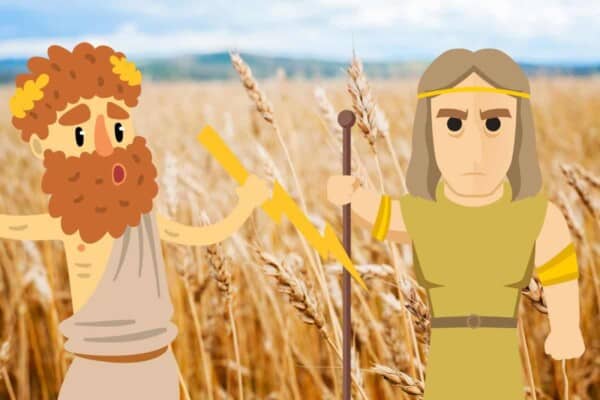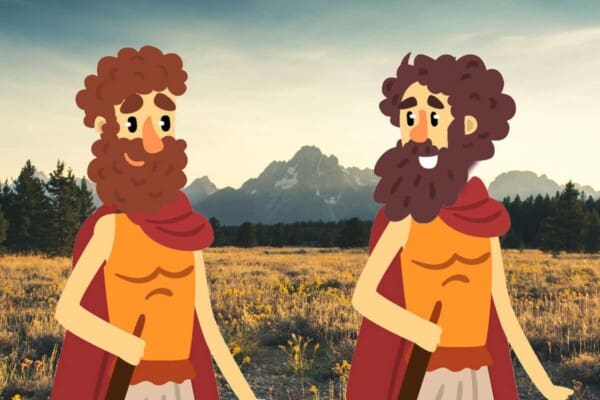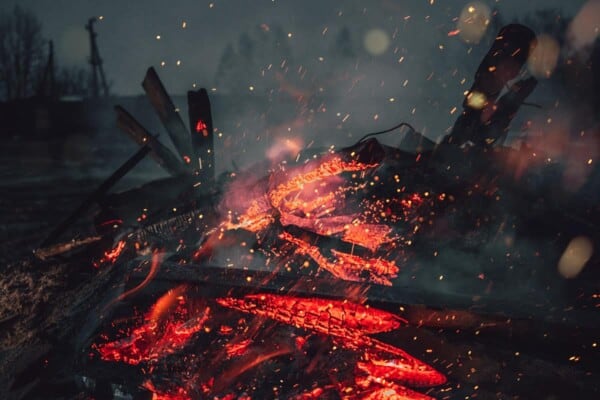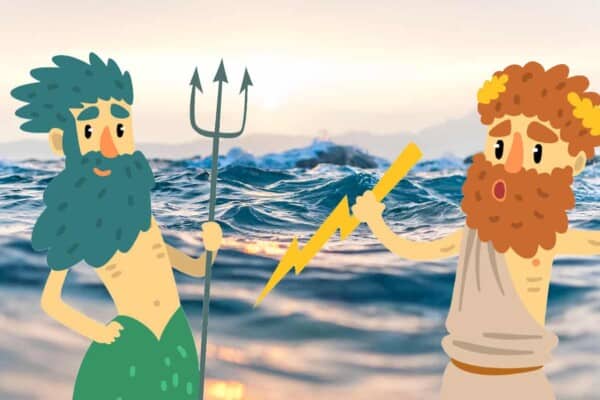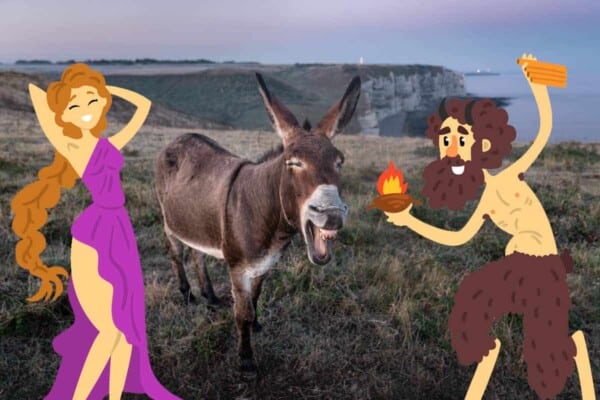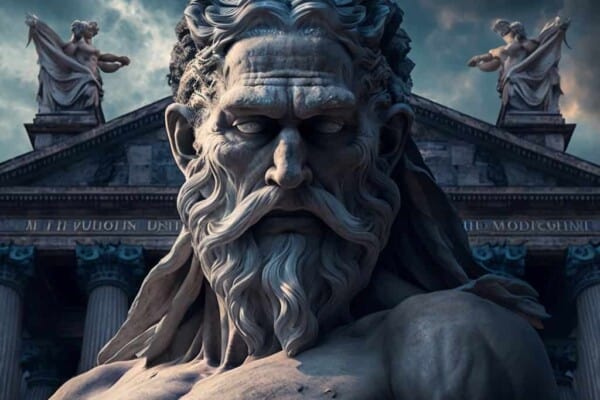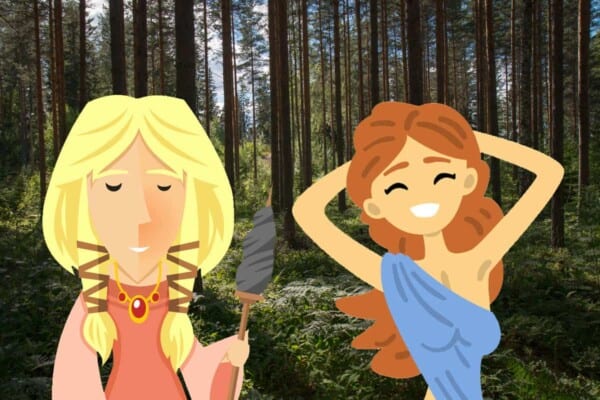Achilles was the son of the nymph Thetis and King Peleus. He was a great warrior and a hero of the Greeks in the war against Troy. His story is best known from the Iliad, which tells the story of just a few weeks of the years-long war. He also features in the Odyssey. A favorite of Athena and considered highly by Zeus, Achilles was an important figure to the gods, even though he was human.
The following facts explore some of the most fascinating part of the hero’s life, loves, battles, and ultimately his death.
Facts about Achilles
1. Achilles was dipped in the River Styx as a baby
In the most common version of the myth, Thetis wished to protect her son from all harm. She dipped him into the Styx, which granted him immortality and invulnerability. However, because she held his heel, this part of his body remained unprotected.
2. His best friend and lover, Patroclus, was his childhood playmate
Patroclus grew up alongside Achilles. He played with him in the gardens of the castle and later learned alongside him with the centaur, Chiron.
3. Thetis disguised Achilles as a woman
When he was a young man, Achilles was hidden in Skyros, in the court of King Lycomedes. He lived amongst the king’s daughters as a handmaiden named Pyrrha. Thetis did this to prevent Achilles being sent to join the war between the Greeks and Trojans.
4. Achilles fell in love with and impregnated one of Lycomedes’s daughters
The princess Deidamia became Achilles’s friend and secret lover. She bore him two children, Neoptolemus (known as Pyrrhus) and Oneiros.
5. Odysseus discovered Achilles by pretending Skyros was under attack
When he did this, the women ran and hid. Achilles, however, reached for the nearest weapon and made to defend the city, revealing himself.
6. Achilles led a force of fifty warships, each with fifty men
His soldiers were Myrmidons, the people of his father, Peleus. Achilles appointed five leaders to act as generals over five hundred men each, and placed himself in ultimate command.
7. Achilles once loved someone to death
He took Troilus as a lover, as the two were intrigued by each other. The young men were both prodigious warriors for their age. However, Achilles killed Troilus, either on the battlefield or in an over-ardent lover’s embrace.
8. Achilles abandoned the war effort out of spite
When Agamemnon took Achilles’s captured princess, Briseis, as his own slave, Achilles felt his honor had been lost. He refused to fight or lead his troops, even when Agamemnon tried to return Briseis to him.
9. The death of Patroclus brought Achilles back to war
Patroclus took over the lead of the men when Achilles refused to fight. He managed to beat back the Trojans, but was killed by Hector. When Achilles learned of Patroclus’s death, he went on a rampage, slaying hundreds of men in his search for Hector.
10. Achilles’s wrathful strength threatened the gods
Zeus had to send gods to restrain Achilles as it was a real fear that he would single-handedly sack and destroy the city of Troy before the Fates had predicted.
11. He denied Hector his dying wish
Achilles’s pain was so great over Patroclus that he could spare no mercy. Hector did not beg for his life, only that his body be respected after death. Achilles killed him and tied his body by the heels to a chariot, dragging it behind him as he rode around the walls of Troy three times.
12. He eventually returned Hector’s body to his father, Priam
Priam, with the help and protection of Hermes, begged Achilles to return his son’s body. Achilles finally relented, allowing Priam a truce for nine days to collect his son and give him a funeral.
13. Patroclus appeared to Achilles in a dream
He pleaded with Achilles for a funeral. Achilles obeyed his wish and held great funeral games.
14. Achilles’s next companion. Antilochus, was also killed
Antilochus, son of Nestor, became close to Achilles after Patroclus’s death. The son of the dawn, Eos, and the king of Ethiopia, a man named Memnon, killed Antilochus. Achilles was once again driven into a rage, killing Memnon in return. Eos cursed the earth, refusing to let the sun rise until Zeus managed to change her mind.
15. The queen of the Amazon was an assassin for Achilles
Penthesilia lived in Themiscyra and was the daughter of the war god Ares. Ares fought for the war on the side of the Trojans. After the truce, Ares sent Penthesilia to Troy. She consulted with Priam, and Priam asked her to kill Achilles.
16. Achilles was distracted by Penthesilia’s beauty
She was so lovely that, when they fought, Achilles could not pay full attention to the battle. However, he eventually overcame his concerns and managed to overpower and kill her.
17. Achilles died while trying to make peace
Tired after many years of anger, bloodshed, and war, Achilles sought to marry Polyxena, a princess of Troy. Her father, Priam, supported the union as it would bring an end to the fighting. However, Prince Paris did not want to release Helen, and so shot an arrow at Achilles. It was guided by Apollo – also on the side of Troy – right into Achilles’s heel, killing him.
18. Odysseus and Ajax the Greater fought over Achilles’s armor
When Patroclus died, Thetis had the god Hephaestus forge Achilles some glorious armor. After Achilles himself died, Odysseus and the older Ajax competed to win the armor. Odysseus won, and Ajax ended up dead by suicide.

19. Achilles spoke to Odysseus in the Underworld
He was one of several shades encountered by the hero. He asked after his son and was pleased by his prowess in battle.
20. After Achilles died, he was laid to rest with Patroclus
Achilles’s body was cremated, and his ashes and bones were mixed with those of Patroclus. The two were then buried in the same urn.
Contents
- Facts about Achilles
- 1. Achilles was dipped in the River Styx as a baby
- 2. His best friend and lover, Patroclus, was his childhood playmate
- 3. Thetis disguised Achilles as a woman
- 4. Achilles fell in love with and impregnated one of Lycomedes’s daughters
- 5. Odysseus discovered Achilles by pretending Skyros was under attack
- 6. Achilles led a force of fifty warships, each with fifty men
- 7. Achilles once loved someone to death
- 8. Achilles abandoned the war effort out of spite
- 9. The death of Patroclus brought Achilles back to war
- 10. Achilles’s wrathful strength threatened the gods
- 11. He denied Hector his dying wish
- 12. He eventually returned Hector’s body to his father, Priam
- 13. Patroclus appeared to Achilles in a dream
- 14. Achilles’s next companion. Antilochus, was also killed
- 15. The queen of the Amazon was an assassin for Achilles
- 16. Achilles was distracted by Penthesilia’s beauty
- 17. Achilles died while trying to make peace
- 18. Odysseus and Ajax the Greater fought over Achilles’s armor
- 19. Achilles spoke to Odysseus in the Underworld
- 20. After Achilles died, he was laid to rest with Patroclus


